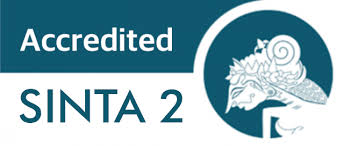Tren Hadis di Masyarakat: Eksplorasi Perkembangan Tema Hadis Melalui Analisis Media Sosial Instagram
DOI:
https://doi.org/10.29240/alquds.v7i3.6172Keywords:
Analisis Wacana Kritis, Hadis, Instagram, Media Sosial, Norman FaircloughAbstract
Hadith Trends in Society: Exploration of the Development of Hadith Themes Through Instagram Social Media Analysis
The discourse surrounding hadith wields a complex influence on society. Serving as the second guiding source after the Quran, hadith not only functions as a spiritual guide but also as a tool for legitimization and justification within various social and political contexts. In the contemporary digital era, especially on social media platforms such as Instagram, the understanding, interpretation, and utilization of hadith by the public have become highly significant. This virtual field research aims to investigate hadith trends within society through the analysis of three Instagram accounts: @nuonline_id, @tausiyahku_, and @muslimahnewsid, employing Norman Fairclough’s Critical Discourse Analysis (CDA) that explores the relationship between language, power, and ideology. In this study, Fairclough’s approach assists in delving into the use of hadith to construct and perpetuate power dynamics and social values through social media. Through this analysis, the research identifies three main social constructions of hadith: the preservation of NU identity and Aswaja values, viewing hadith as the moral foundation of the Nahdliyin; the reconstruction of social morality through reinterpretations of hadith relevant to contemporary social realities; and the indoctrination of ideology through exclusive and puritanical interpretations of hadith. These findings underscore the complexity of hadith in shaping the identity, morality, and ideology of contemporary society through social media. The implications of this study are profound, indicating that the understanding and application of hadith in social media not only reflect Islamic teachings but also specific socio-political influences and Islamic ideologies. Consequently, this research contributes vital insights into the trends of hadith within digital society, providing a foundation for further discussions about Islam and identity in this digital era.
Downloads
References
Anderson, J. W. (2018). “The Internet and Islam’s New Interpreters.†Mapping the Rise of the Study of Religious Practice Onlinell.
Bruinessen, Martin Van. (2013). Producing Islamic Knowledge in Western Europe: Discipline, Authority, and Personal Quest.†In Producing Islamic Knowledge. Routledge.
Campbell, H, dan Teusner, P. E. (2011). “Religious Authority in The Age of The Internet.†Virtual Lives: Christian Reflection. 38.
Hasan, Noorhaidi. (2008). “Reformasi, Religious Diversity, and Islamic Radicalism after Suharto.†Journal of Indonesian Social Sciences and Humanities. Vol. 1.
Hasyim, Moh. (2013). Analisis Berita di NU Online. Jakarta: UIN Syarif Hidayatullah.
Mun’im, Abdul. (2008). Teknologi sebagai Sarana Pengembangan Teologi dan Ideologi. Jakarta: NU Online.
Rifai, Achmad. (2021). The Discourse of Women’s Piety and Gender Bias Construction on Muslimah Websites in Indonesia.†Al-Balagh: Jurnal Dakwah dan Komunikasi. Vol. 6, No. 2.
Rijal, Syamsul. (2011). “Indoctrinating Muslim Youths: Seeking Certainty Through an-Nabhanism.†Al-Jami’ah. Vol. 49.
Supriyadi, T. (2020). “Action Research in Hadith Literacy: A Reflection of Hadith Learning in The Digital Age.†International Journal of Learning, Teaching and Educational Research. 19 (5).
Downloads
Published
How to Cite
Issue
Section
Citation Check
License
Authors who publish with AL QUDS : Jurnal Studi Alquran dan Hadis agree to the following terms:- Authors retain copyright and grant the journal right of first publication with the work simultaneously licensed under a Creative Commons Attribution-NonCommercial-ShareAlike 4.0 International License (CC BY-NC-SA 4.0) that allows others to share the work with an acknowledgment of the work's authorship and initial publication in this journal.
- Authors are able to enter into separate, additional contractual arrangements for the non-exclusive distribution of the journal's published version of the work (e.g., post it to an institutional repository or publish it in a book), with an acknowledgment of its initial publication in this journal.
- Authors are permitted and encouraged to post their work online (e.g., in institutional repositories or on their website) prior to and during the submission process, as it can lead to productive exchanges, as well as earlier and greater citation of published work (See The Effect of Open Access).










